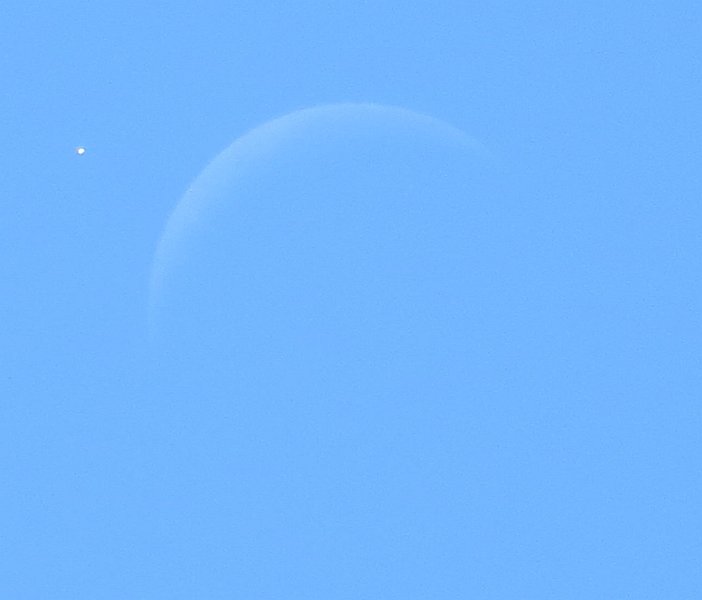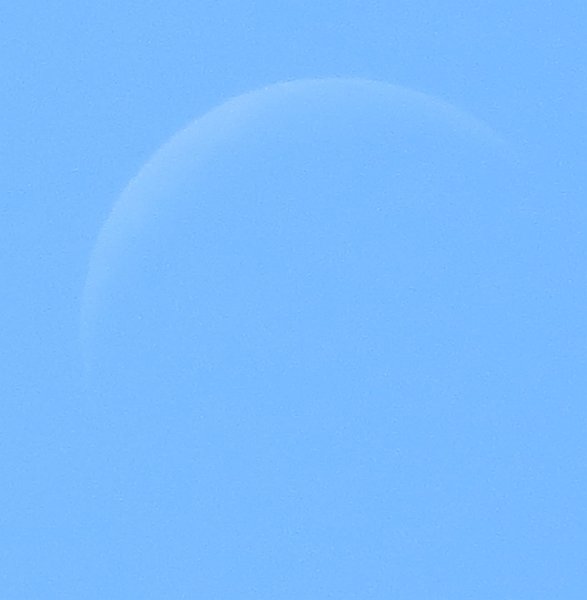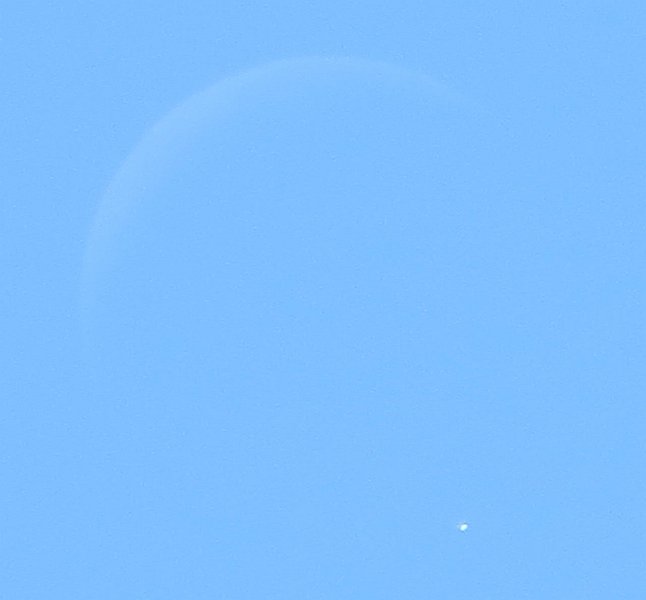If you were up before sunrise on Monday, August 13th, 2012 you might have seen a very bright “star” next to the moon. As dawn turned to daylight, you could still see that star, or rather, that planet in the daytime snuggled up to the crescent moon.
That planet was Venus, and the moon was about to pass directly in front of it as seen from our vantage point on Earth. An occultation occurs when a solar system body passes in front of a more distant one or a star. Each one is only visible from a certain part of Earth. This occultation of Venus by the moon was only visible over northern Asia and Japan at night and over North America during the daytime.
I set an alarm to remind myself to step outside at about noon on Monday. It was a challenge to find the slender crescent moon, but I had a great view, shielded from the sun by the tall wall of my office building. The shadow helped by boosting the viewing contrast a little, too!
I had no difficulty seeing Venus naked-eye. And for about an hour I held court on the steps to JPL’s famed Space Flight Operations Facility or SFOF for short, and showed a daytime planet to several dozen of my colleagues. At about 1:30 p.m. PDT the moon passed in front of Venus after inching closer for over a half hour.
I was reminded of folksinger Christine Lavin’s lovely song Venus Kissed the Moon from her 1990 album Attainable Love. The lyrics go like this:
Venus kissed the Moon tonight
We watched her in the Sky
She’s been flirtin’ with him for centuries
Too bad he’s so shy
He’s waxing
He’s waning
You don’t see Venus complaining
She’ll steal a kiss whenever she can
Not ’till 2031
Will this happen again
There have actually been several Venus/Moon occultations since Christine wrote this song, but that doesn’t matter. I hummed her sweet song, and watched Venus flirt closer and closer to the moon. I’m listening to it as I write these words, too!
My friend Akkana Peck wrote “If you’ve never seen a Venus occultation before, you’ll be amazed at the difference between the brightness of Venus and the dimness of the moon’s limb. We think of the moon as bright, but it’s actually dark grey, about the same albedo (reflectivity) as asphalt; whereas Venus is covered with brightly reflective clouds.” See Akkana’s images of the Venus occultation and her blog here.
I snapped a few pictures with my hand-held Canon PowerShot SX260 HS with its nifty 20x zoom. I zoomed nearly all the way out for these images.
The next opportunity to see a lunar occultation of Venus from North and Central America will be on December 7, 2015. From Los Angeles, we’ll get to see this event from 7:30 am to 11:30 am.
I’m so glad we don’t have to wait until 2031 to see Venus kiss the moon, Christine!




Thank you for writing this piece. My daughter took a great picture at contact with her Iphone through my ETX 90. For Christmas I had the picture printed and framed so that she remember the day. I titled the picture Venus Kissed Mars after I saw this piece.